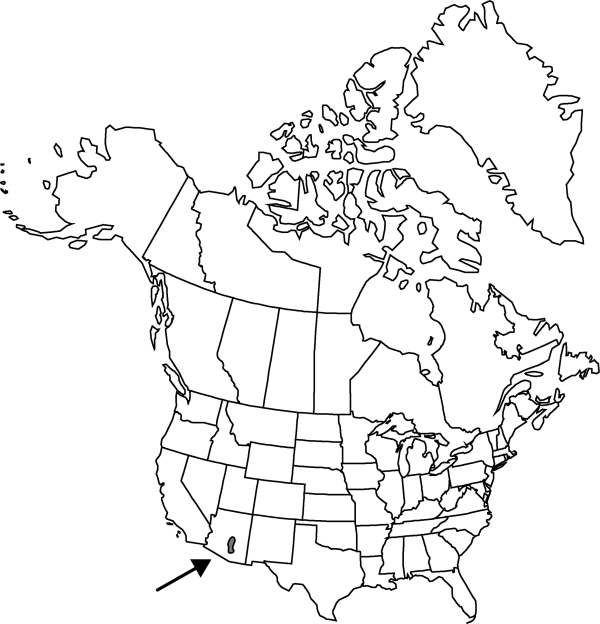Cylindropuntia ×kelvinensis
Calyx 4: 142. 1994.
Trees 1.5–2 m; trunk commonly branched; crown open to compact usually bearing whorled branches. Stem segments often easily dislodged, if terminal, green or purple, 5–13 × 1.8–3 cm; tubercles prominent, broadly oval, 0.7–1.2 (–1.5) cm; areoles obdeltate to rhombic, 4.5–6 × 3–5 mm; wool yellow, aging gray to black. Spines 0–8 (–13) per areole, sometimes with 1–3 bristlelike spines along areole margins at most areoles, usually slightly interlacing with spines of adjacent areoles, yellowish to tan, sometimes with pinkish hue, to redbrown and partially gray coated, aging brown-gray to gray; major abaxial spines angular-flattened, usually reflexed, the longest to 30 mm; major adaxial spines subterete, erect-divergent, the longest to 18 mm; sheaths uniformly whitish or tipped yellow to gold, slightly baggy. Glochids in inconspicuous adaxial crescent, yellow, to 1 mm. Flowers: inner tepals rose to magenta, spatulate, 18–25 (–30) mm, emarginate-apiculate; filaments deep rose; anthers yellow; style white, tinged red-purple distally; stigma lobes white with hint of green. Fruits usually sterile, sometimes forming short chains, yellow-green to yellow, sometimes purplish, 25–45 × 15–22 mm, fleshy, tuberculate, spineless; tubercles progressively longer toward fruit apex; umbilicus 4–7 mm deep; areoles 32–44. Seeds pale-yellow, orbicular to angular or squarish in outline, flattened to warped, 3.5–4 × 3–4 mm, sides with 0–2 large depressions; hilum sometimes pointed; girdle smooth. 2n = 22, 33.
Phenology: Flowering spring (Apr–Jun).
Habitat: Sonoran desert scrub, edges of grasslands, rocky flats and slopes, rolling hills
Elevation: 500-1000 m
Discussion
Selected References
None.
